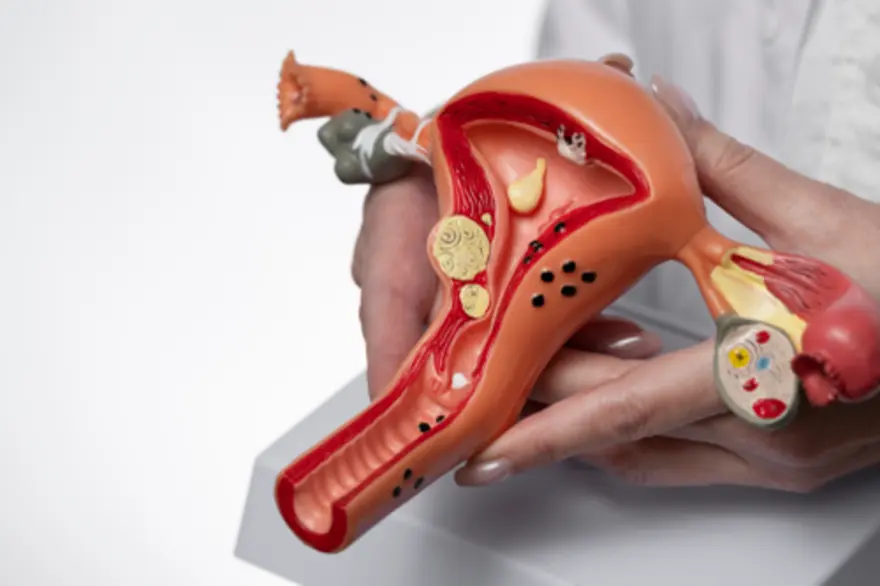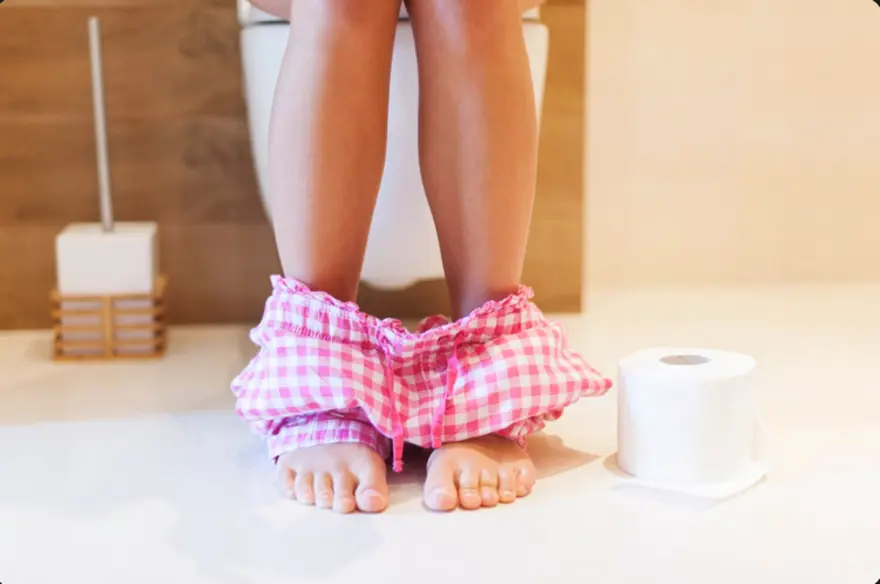Bilirubin Total Test
Also known as: Serum Bilirubin Test -Bilirubin Total, Direct, and Indirect Serum Levels
Serum Bilirubin Test -Bilirubin Total, Direct, and Indirect Serum Levels Details in Brief
| Also Known As | Bilirubin Total, Direct, Indirect, Serum; Total Serum Bilirubin (TSB) |
|---|---|
| Purpose | Helps evaluate liver function and jaundice, aids in differentiating between hepatocellular and haemolytic jaundice |
| Preparation | Clinical History Required |
| Fasting | Not Required |
| Reporting Time | After 4 Hours |
| Cost | 320 |
What is a Bilirubin Total Test?
A Bilirubin Total Test is a diagnostic blood test that measures the level of bilirubin, a yellowish-orange pigment produced during the normal breakdown of haemoglobin in red blood cells.
This test helps detect liver diseases, bile duct problems, and conditions that cause excessive destruction of red blood cells, such as jaundice and haemolytic anaemia. The test uses a blood sample drawn from a vein in your arm.
What Does the Bilirubin Total Test Measure?
The Bilirubin Total Test measures different forms of bilirubin circulating in your bloodstream to assess your liver function and red blood cell health:
- Total Bilirubin - The complete amount of bilirubin in your blood, combining both direct and indirect forms
- Direct (Conjugated) Bilirubin - Bilirubin that has been processed by your liver and is ready for excretion
- Indirect (Unconjugated) Bilirubin - Bilirubin formed from red blood cell breakdown that is travelling to your liver for processing
Bilirubin Total Test: Who Needs It and Why It's Done
What symptoms may call for a Bilirubin Total Test?
Your doctor may recommend a Bilirubin Total Test if you experience symptoms suggesting liver problems or excessive red blood cell breakdown:
- Jaundice - yellowing of skin and whites of eyes
- Dark-coloured urine that appears brown or cola-coloured
- Pale, light-grey or clay-coloured stools
- Abdominal pain or swelling, especially in the upper right side
- Unexplained fatigue or weakness
- Nausea and vomiting
- Fever or general malaise associated with liver inflammation
Who should get a Bilirubin Total Test?
Several groups of people may benefit from this test to monitor their health:
- Patients with symptoms - Anyone experiencing jaundice or other related symptoms
- Newborns - Routine screening for infant jaundice, which is common but needs monitoring
- Individuals with liver or gallbladder conditions - To monitor diseases like hepatitis, cirrhosis, or gallstones.
- People with a heavy alcohol use history - Excessive alcohol can damage your liver.
- Those suspected of haemolytic anaemia - A condition where red blood cells break down too quickly
- People on certain medications - To monitor for potential liver damage from medications
- Preventive health checkups - As part of routine Liver Function Tests
Why is a Bilirubin Total Test done?
A Bilirubin Total Test helps diagnose and monitor your liver and bile duct health while investigating conditions that cause excessive red blood cell breakdown.
Importance of a Bilirubin Total Test
The Bilirubin Total Test is clinically important because it serves as a direct and reliable indicator of your liver function and red blood cell health. High bilirubin is the primary cause of jaundice, and this test helps your doctor identify the underlying reason.
By measuring different types of bilirubin, the test helps your doctor pinpoint where the health risk might be occurring. High indirect bilirubin may indicate issues with red blood cell breakdown, while high direct bilirubin suggests problems within your liver or bile ducts. This information is crucial for accurate diagnosis and effective treatment planning, especially for newborns, as monitoring can prevent serious complications.
Bilirubin Total Test Booking & Reports – Metropolis Healthcare India
How to book a Bilirubin Total Test?
- Simple Online Booking
Booking can be done through the Metropolis Healthcare App or website. Select Bilirubin Total Test, choose a convenient time slot, and provide your address for a blood test at home. You can also visit the nearest Metropolis Lab if you prefer to give the sample directly at the lab. - Safe Home Sample Collection
Our trained phlebotomists ensure the timely collection of your sample while strictly following all safety and hygiene protocols. - Sample Tracking Updates
Stay informed at every step. From collection to testing, you can track your sample directly through the Metropolis Healthcare website. - Accurate Laboratory Testing
Your sample is processed at our NABL & CAP-accredited laboratories, where expert technicians ensure accurate results. - Quick & Easy Reports
Receive your test reports promptly via email, WhatsApp, or by downloading them directly from the Metropolis Healthcare website or app.
Is home sample collection for the Bilirubin Total Test available near you?
Yes, Metropolis Healthcare offers home blood sample collection for your Bilirubin Total Test, bringing convenience right to your doorstep. Our trained phlebotomists follow strict safety protocols to collect your blood sample. This service eliminates the need to travel to a pathology lab, making healthcare more accessible for you and your family.
How long does it take to get a Bilirubin Total Test report?
Reports are usually available after 4 hours once the sample reaches the lab.
Note: Reporting time may vary depending on your location.
Where can I see or get Bilirubin Total Test results?
Test results from Metropolis Healthcare can be accessed through multiple convenient channels. You can log in to the Metropolis website using your credentials or use the Metropolis Healthcare App to view and download your reports. Additionally, test reports are sent via email or WhatsApp, and you also have the option to collect a physical copy directly from the lab.
Interpreting Bilirubin Total Test Results
What your Bilirubin Total Test results may indicate
The following table shows the normal ranges for bilirubin components and what elevated levels might suggest:
|
Parameter |
Normal Range |
High Levels May Indicate |
Low Levels May Indicate |
|
Bilirubin Total |
0-1.2 mg/dL |
Hepatitis, cirrhosis, haemolytic disorders, liver obstruction, inherited enzyme deficiencies. |
Generally not clinically significant |
|
Bilirubin Direct |
0.0-0.3 mg/dL |
Hepatic obstruction, hepatitis, cirrhosis, inherited enzyme deficiencies, bile duct problems. |
Generally not clinically significant |
|
Bilirubin Indirect |
0.1-1.0 mg/dL |
Haemolytic anaemia, liver processing issues, excessive red blood cell breakdown. |
Generally not clinically significant |
Conditions that May Affect Bilirubin Total Test Accuracy
Several factors can influence your test results and should be discussed with your doctor:
- Dehydration can concentrate blood substances, leading to falsely elevated bilirubin levels.
- Vigorous exercise immediately before the test may raise bilirubin levels.
- Certain medications can interfere with results, so inform your doctor about all medicines and supplements.
- Recent illness or significant stress may impact bilirubin measurements.
- Haemolysed, lipemic, icteric, or clotted blood samples can affect accuracy.
- Improper sample storage or transport at incorrect temperatures may alter results.
How is a Bilirubin Total Test Done?
The Bilirubin Total Test procedure is straightforward and involves a simple blood draw:
- A trained phlebotomist cleans the area on your arm, usually inside your elbow, with an antiseptic.
- An elastic band (tourniquet) is tied around your upper arm to make the veins more visible.
- A sterile needle is inserted into the vein to collect blood into a special gel vacutainer.
- The needle is removed, and a cotton ball or bandage is applied to stop any bleeding.
- Your blood sample is labelled and sent to the laboratory for analysis using the diazo method.
- The entire process takes just a few minutes with minimal discomfort.
How Should You Prepare for a Bilirubin Total Test?
Preparing for your Bilirubin Total Test is simple and requires minimal effort:
- No fasting required - You can eat and drink normally before the test.
- Avoid vigorous exercise - Refrain from intense physical activity immediately before your test.
- Stay well-hydrated - Drink adequate water unless instructed otherwise by your doctor.
- Inform about medications - Tell your doctor about all prescription. medications, over-the-counter medicines, and herbal supplements you're taking.
- Provide clinical history - Share relevant medical information as required by your pathology lab.
Diseases that a Bilirubin Total Test Can Help Detect
The Bilirubin Total Test is valuable for diagnosing and monitoring various health conditions:
- Jaundice and its underlying causes
- Hepatitis (inflammation of the liver)
- Liver cirrhosis and other chronic liver diseases
- Haemolytic anaemia (excessive red blood cell destruction)
- Bile duct obstruction or cholestasis
- Gallbladder diseases
- Neonatal jaundice in newborns
- Inherited enzyme deficiencies affecting bilirubin processing
- Liver damage from medications or toxins
Bilirubin Total Test/Packages that You Can Book With Metropolis Healthcare
The following comprehensive packages include the Bilirubin Total Test along with other important liver function assessments:
|
Test/Package Name |
Purpose/Highlights |
|
Comprehensive liver assessment with multiple parameters |
|
|
Essential liver function screening panel |
|
|
Basic liver health evaluation package |
Bilirubin Total Test Prices in Different Cities
The cost of a Bilirubin Total Test may vary depending on your location. Here's a table showing the approximate prices in different cities.
|
City |
Price |
|
₹170 to ₹320 |
|
|
₹170 to ₹320 |
|
|
₹170 to ₹320 |
|
|
₹170 to ₹320 |
|
|
₹170 to ₹320 |
|
|
₹170 to ₹320 |
Serum Bilirubin Test -Bilirubin Total, Direct, and Indirect Serum Levels Price
Metropolis Healthcare is a leading diagnostics centre and pathology lab in India equipped with the latest state-of-the-art technologies that provides the Serum Bilirubin Test -Bilirubin Total, Direct, and Indirect Serum Levels with a clear pricing structure.
The Serum Bilirubin Test -Bilirubin Total, Direct, and Indirect Serum Levels Price in Mumbai is ₹ 320 .
We are committed to deliver accurate and quality results from the best labs in India with complete transparency regarding test cost and turnaround time. No matter where you are, we strive to offer patients high-quality service that is affordable and accessible.
Frequently Asked Questions
The Bilirubin Total Test can be taken at any time of day, but it's often done in the morning, especially if fasting is required or if it's part of a comprehensive liver function panel or any other full-body checkup panels.
Fasting is often not required for this test. However, your doctor will provide specific fasting instructions if required for your unique case.
Yes, dehydration can concentrate your blood and may cause temporarily elevated bilirubin levels. It's important to maintain normal hydration before the test unless instructed otherwise by your doctor.
Besides fasting if required, Bilirubin Total Test preparation includes informing your doctor about all medications, vitamins, and supplements you're taking. Some medicines can interfere with bilirubin levels, and your doctor may advise temporary discontinuation.
A phlebotomist cleans your arm, applies a tourniquet, inserts a sterile needle into your vein, collects blood in a special tube, and applies a bandage. The process is quick and minimally uncomfortable.
The health risks are minimal, similar to any blood test. You might experience slight pain during the draw or minor bruising at the needle site, which usually disappears quickly.
Normal ranges are: Total Bilirubin 0-1.2 mg/dL, Direct Bilirubin 0.0-0.3 mg/dL, and Indirect Bilirubin 0.1-1.0 mg/dL. Your doctor will interpret your test results based on your specific medical condition.
The test is also commonly known as Total Serum Bilirubin (TSB), Bilirubin Total Direct Indirect Serum Test, or simply as part of the Liver Function Test (LFT) panel.
Ratings & Reviews (1)





agood
Why Metropolis?
Metropolis has a team of 200 senior pathologists and over 2000 technicians delivering diagnostic solutions in the areas of routine, semi specialty and super specialty domains like Oncology, Neurology, Gynaecology, Nephrology and many more.
We offer a comprehensive range of 4000+ clinical laboratory tests and profiles, which are used for prediction, early detection, diagnostic screening, confirmation and/or monitoring of the disease.





















 WhatsApp
WhatsApp